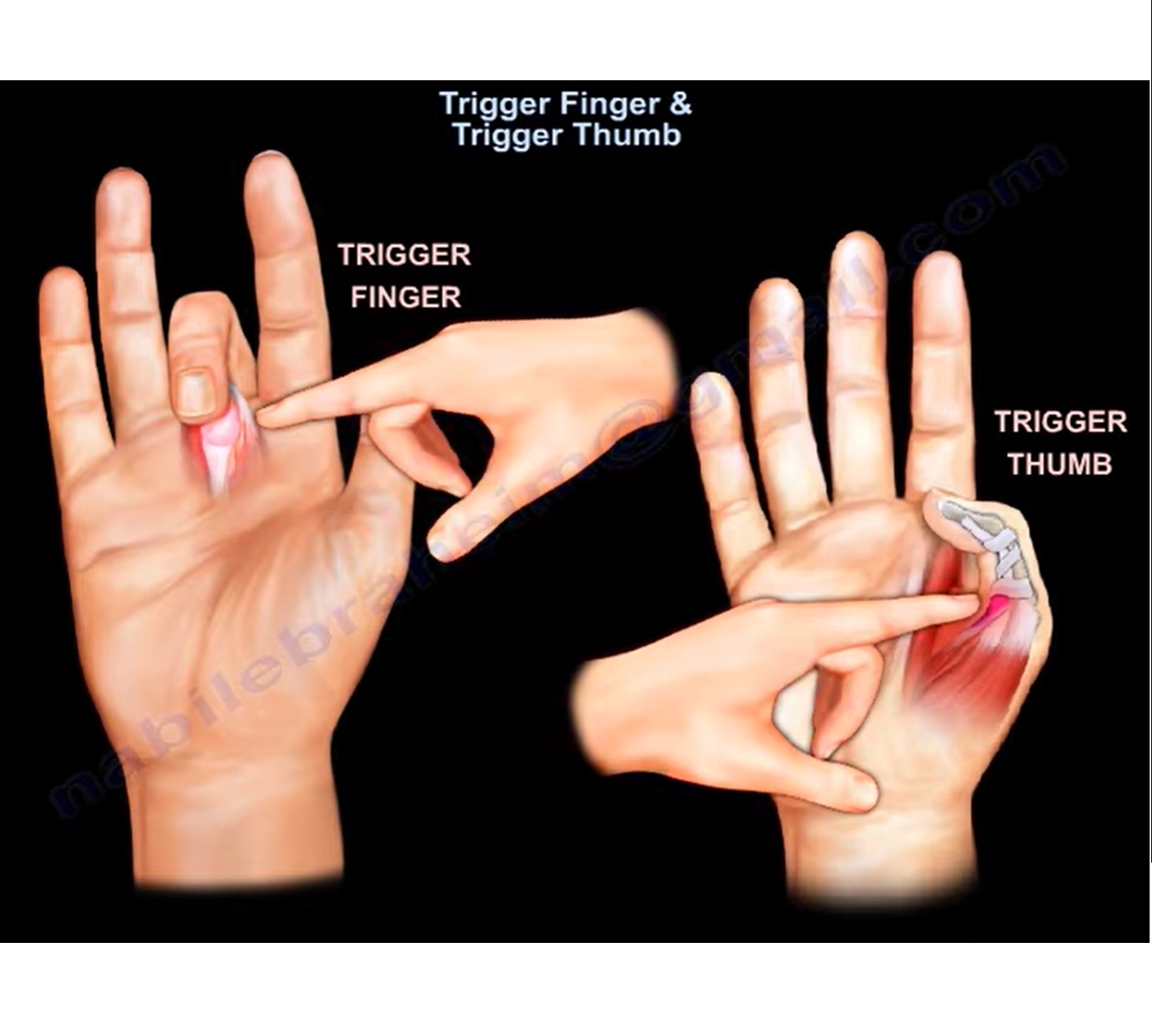Courtesy: Prof Nabil Ebraheim, University of Toledo, Ohio, USA
Trigger finger is a condition where finger gets stuck in a bent position and then snaps right.
– CAUSE: when the flexor tendon of the affected finger becomes thick and inflamed as it slides through the tendon pulley, causing a thickened nodule and triggering of the tendon.
– RISK FACTORS: Repetitive injuries or occupation
– SYMPTOMS:
1) Pain is at level of the A1 pulley where there will be catching, clicking, and triggering with finger flexion and extension
2) Pain occurs before triggering and the pain is usually non-specific
– Typical stages of trigger finger:
* Patient complains of catching and then locking that is usually fixed.
* This locking occurs when the tendon is unable to pass through the sheath. As the tendon becomes inflamed it gets caught.
* This progresses into a fixed, flexed finger.
– Commonly affects the ring and long fingers.
– 60% or more of patients with trigger fingers usually have associated carpal tunnel syndrome.
– This condition occurs more in diabetics, where both hands and multiple digits may be affected and also occurs in females older than 50 years.
– In addition to diabetes, there are some other medical conditions that can be associated with trigger finger such as:
(i) Gout
(ii) Pseudogout
(iii)Rheumatoid arthritis
(iv) Sarcoidosis
(v) Hypothyroidism
TREATMENT:
a) CONSERVATIVE: the most important prognostic indicator for a good result with non-operative treatment is the duration of triggering.
An irreducible locked trigger finger with flexion contracture of the PIP joint should not be treated conservatively or by injection.
Includes:
• Splinting
• NSAIDs
• Rest
• Activity modification
– Injection is done only into the tendon sheath, not into the tendon directly which gives a relief.
– But, injection is not very much effective in diabetics. Hence, we should always try to obtain HbA1c in these patients before considering any surgical interventions.
b) SURGERY: done only if the non-operative treatment fails.
This involves the release of A1 pulley (either percutaneous or open method)
Percutaneous release of the A1 pulley can be done for the fingers, but not for the thumb, because the radial digital nerve almost crosses in middle of the surgical field.
When releasing the A1 pulley(incision usually made on the palmar crease), the release should be done at the level of MP joint.
The A2 and A4 pulleys are important structures and should not be touched, excised or released.
HOW TO RELEASE THE A1 PULLEY?
• The procedure is done with local anesthesia to allow intra-operative assessment and to communicate with the patient to confirm that adequate release was done.
• In patients with rheumatoid arthritis, an excision of flexor digitorum superficialis may be needed.
• In case of TRIGGER THUMB, the incision is made in the MP flexion crease.
• When releasing the flexor pollicis longus tendon, watch out for the digital radial nerve as it is in the field of surgery.

Good short vdo I am benefited by watching it